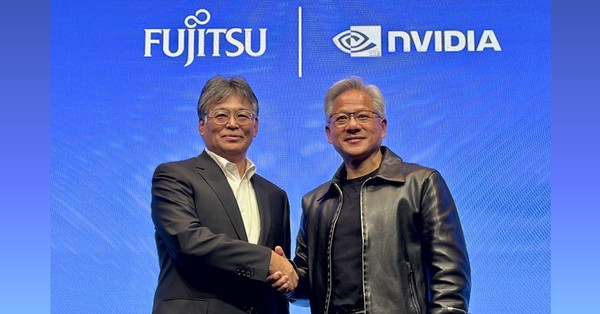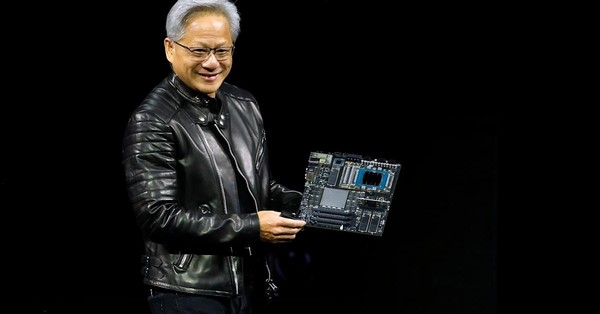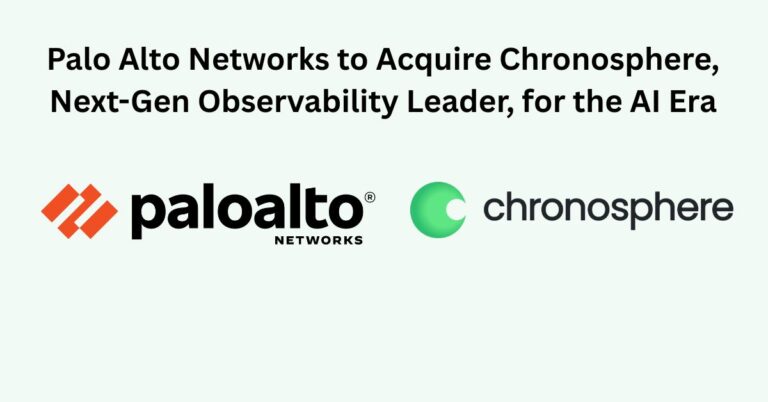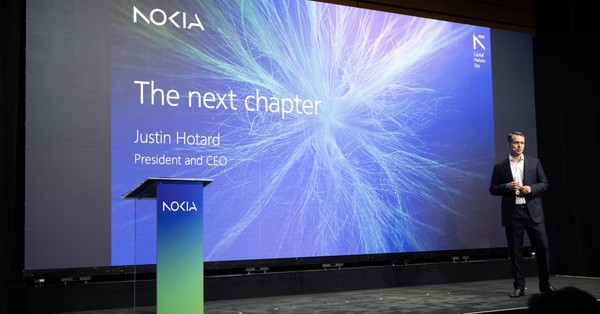Fujitsu and NVIDIA advance full-stack AI infrastructure for industry
Fujitsu is expanding its strategic collaboration with NVIDIA to deliver a full-stack AI infrastructure that pairs domain-specific AI agents with high-performance compute for enterprise and industrial use.
Collaboration details: AI agent platform and NVLink-Fusion stack
The companies will co-develop an AI agent platform and a next-generation computing stack that tightly couples Fujitsu’s FUJITSU-MONAKA CPU series with NVIDIA GPUs using NVIDIA NVLink-Fusion. On the software side, Fujitsu plans to integrate its Kozuchi platform and AI workload orchestrator (built with Fujitsu AI computing broker technology) with the NVIDIA Dynamo platform. For model lifecycle and agent evolution, the collaboration will leverage NVIDIA NeMo and Fujitsu’s multi-agent techniques, including optimization of the Takane AI model, with delivery as NVIDIA NIM microservices to streamline deployment. Fujitsu and NVIDIA also outlined a combined HPC-AI software ecosystem that blends Fujitsu’s high-speed ARM software with NVIDIA CUDA for one-stop support.
Target industries, Japan-first rollout, and expansion plan
The initiative prioritizes sectors such as manufacturing, healthcare, and robotics—areas where digital twins, operational automation, and “physical AI” are immediate value drivers. The roll-out starts in Japan with a roadmap to global expansion. Beyond enterprise AI, the partners intend to extend work into high-performance computing and quantum, signaling a broader compute vision. Fujitsu positions the resulting infrastructure as a foundation for Japan’s digital society by 2030.
Why full-stack AI matters for production-scale adoption
Enterprises are moving from model experiments to production-scale AI, where cost, performance, governance, and integration determine success.
Shifting from models to secure, autonomous AI agents
Most organizations have piloted generative models; the harder problem is building agents that plan, act, and learn within enterprise workflows. This collaboration focuses on multi-tenant, secure agent platforms that can be tailored by industry and continuously improved. In manufacturing, agents can drive closed-loop optimization with digital twins to reduce defects and downtime. In healthcare, they can support triage, documentation, and clinical workflows subject to strict safety and audit controls. For robotics and physical AI, agents combine perception, planning, and actuation to address labor shortages and safety-critical tasks on the factory floor or in logistics.
CPU–GPU coherence and software integration to optimize TCO
The emphasis on NVLink-Fusion connectivity between MONAKA CPUs and NVIDIA GPUs aims to reduce data movement, improve memory bandwidth, and lower latency—all central to agentic workloads that mix reasoning, retrieval, simulation, and control. A silicon-to-software approach also targets energy efficiency and predictable performance, both essential for AI at scale. The partners’ talk of zetascale design underscores the need to plan for orders-of-magnitude growth in model size, orchestration complexity, and multimodal data while keeping total cost of ownership manageable.
Implications for telecom operators and enterprise IT
For operators and CIOs, the partnership offers a blueprint to operationalize AI agents across data centers, edge locations, and regulated environments.
Telco AI and edge inference opportunities
Telecom operators can use packaged NIM microservices to accelerate network operations, from RAN optimization to self-healing cores and customer care copilots. Multi-tenancy and strong isolation are relevant for network slicing and wholesale models. The CPU-GPU fabric combined with CUDA and ARM software can support latency-sensitive inference at MEC sites, with centralized training and orchestration in core data centers. Data locality features are critical for sovereignty requirements in Japan and the EU, enabling operators to align AI with lawful intercept, privacy, and critical infrastructure mandates.
Industrial and healthcare AI agent use cases
Manufacturers can embed agents into quality inspection, predictive maintenance, and closed-loop process control using digital twins. Robotics deployments benefit from physical AI that blends perception with actuation under safety constraints. In healthcare, governed agent stacks can support ambient clinical documentation, prior-authorization automation, and decision support with traceability and audit. In all cases, domain tuning with NeMo and model governance on Kozuchi will be essential to hit accuracy, safety, and compliance targets.
Key adoption risks and watch points
Execution will hinge on ecosystem maturity, supply dynamics, and enterprise-grade governance.
Ecosystem integration and multi-cloud portability
The interplay among Kozuchi, the AI workload orchestrator, NVIDIA Dynamo, NeMo, and NIM microservices must be smooth for production use. Buyers should assess portability across Kubernetes clusters, ONNX pipelines, and common MLOps stacks to avoid lock-in. API-level compatibility and reference architectures for hybrid and multi-cloud deployments will influence adoption velocity.
Cost, power, and supply-side constraints
Capacity constraints for advanced GPUs and new CPU series could affect timelines. Power and cooling are now gating factors for AI rollouts; telcos and industrials need clear PUE, density, and energy roadmaps. Economics will depend on utilization, model right-sizing, and agent offloading to more efficient inference pathways. Transparency on NVLink-Fusion availability and MONAKA CPU production will be important for planning.
Safety, security, and autonomy governance
Multi-tenant agent platforms require strong isolation, policy enforcement, and continuous monitoring. Continuous learning adds drift and compliance risks, especially in healthcare and critical infrastructure. Enterprises should expect robust content filtering, retrieval governance, and human-in-the-loop mechanisms, along with audit trails that map agent actions to policies.
Buyer recommendations and deployment roadmap
Treat this as a reference architecture for scalable, governed AI agents and plan incrementally from pilots to production.
Near-term steps (0–6 months) for pilots
Identify 2–3 agent-ready workloads with measurable ROI and run pilots using NIM microservices on Kubernetes. Benchmark inference and energy profiles across CUDA on ARM-based nodes with representative datasets. Start integrating Kozuchi and MLOps tooling for model registries, evaluation, and policy controls. Establish data governance for retrieval-augmented generation and define red-teaming and safety tests for agent behaviors.
Medium-term architecture (6–24 months)
Design a hybrid topology that places latency-critical inference at edge sites and consolidates training in core facilities. Plan for CPU-GPU coherence with NVLink-Fusion where available, and define observability for agent actions, cost, and compliance. Negotiate contracts that include capacity commitments, sustainability metrics, and portability clauses. Build a partner map spanning robotics, digital twin vendors, and systems integrators to accelerate vertical use cases.
Outlook for scalable, sovereign-capable AI
The collaboration positions Fujitsu and NVIDIA to deliver a sovereign-capable, vertically tuned AI stack that can scale from pilot to production across industries.
Bottom line: full-stack integration as a differentiator
As enterprises graduate from models to agents, full-stack integration from silicon to microservices will be a differentiator. Expect rapid early traction in Japanese manufacturing and robotics, with healthcare and telecom following as governance frameworks mature. Keep an eye on how fast NVLink-Fusion systems and MONAKA CPUs reach broad availability, how the Kozuchi–Dynamo–NeMo stack standardizes interfaces, and how HPC and quantum research feed future AI acceleration. Early movers that align architecture, data governance, and cost controls now will capture outsized value as agent-based automation scales.









































